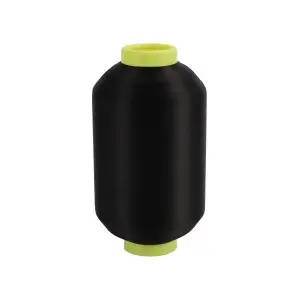Hardness test of nylon hot melt wire
I. Definition and significance of hardness test
Definition of hardness: Hardness is the ability of a material to resist local deformation, especially plastic deformation, indentation or scratch.
Significance of hardness test: For nylon hot melt wire, hardness test can evaluate its wear resistance, durability and applicability, which directly affects the quality and service life of the product.
II. Common methods of hardness test
(I) Shore hardness test
Test principle: Determine the hardness by measuring the indentation depth on the surface of the material.
Test steps: Use the Shore hardness tester to press the pressure needle into the surface of the nylon hot melt wire at a certain speed and record the indentation depth.
Scope of application: Applicable to softer nylon hot melt wires, such as hot melt adhesives.
Advantages and disadvantages: Simple operation and fast test speed, but high requirements for the flatness of the material surface.
(II) Brinell hardness test
Test principle: Use a carbide ball of a certain diameter to press into the surface of the material under test under a specified load. After a period of time, remove the load and measure the indentation diameter on the material surface.
Test steps: Fix the nylon hot-melt sample on the test bench, apply the specified load, keep it for a certain period of time, then remove the load and measure the indentation diameter with a microscope.
Scope of application: Applicable to harder nylon hot-melts, such as reinforced nylon.
Advantages and disadvantages: The test results are relatively accurate, but the test process is relatively complicated and requires high equipment.
(III) Rockwell hardness test
Test principle: Use a diamond cone or steel ball indenter to press into the surface of the material under test with a specified load, and determine the hardness based on the indentation depth.
Test steps: Fix the nylon hot-melt sample on the test bench, select a suitable indenter and load, and measure the indentation depth after applying the load.
Scope of application: Applicable to nylon hot-melts of various hardness ranges.
Advantages and disadvantages: Fast test speed and simple operation, but high requirements for material uniformity.
III. Standards for hardness testing
International standards: Introduce hardness test standards formulated by the International Organization for Standardization (ISO) and the American Society for Testing and Materials (ASTM).
Domestic standards: Introduce the standards for nylon hot melt hardness testing in China’s national standards (GB).
Differences and applicability of standards: Analyze the differences between different standards and how to choose the appropriate standard in actual testing.
IV. Hardness testing equipment
Common brands and models of hardness testing equipment on the market, such as Germany’s Brinell hardness tester and the United States’ Rockwell hardness tester.
Performance characteristics and scope of application of the equipment, and how to choose the appropriate equipment according to the test requirements.
V. Factors affecting hardness test results
(I) Material factors
The composition of nylon hot melt: Different additives and fillers will affect its hardness.
Material processing technology: The influence of process parameters such as injection molding and extrusion on hardness.
(II) Test environment factors
Temperature: Temperature changes in the test environment will affect the hardness of the material.
Humidity: Humidity affects the hygroscopicity of nylon hot melt, which in turn affects the hardness test results.
(III) Test operation factors
Tester’s operating skills: Improper operation may lead to deviations in test results.
Calibration of test equipment: Uncalibrated or improperly calibrated equipment will affect test accuracy.
Post time: Jul-28-2025

